Secret
Beyond the Door
1948
Director: Fritz Lang
Starring: Joan Bennett, Michael
Redgrave
Fritz
Lang, as a director, is rightly remembered and revered for his work in the
1920s and 1930s in German Expressionism.
When he moved to Hollywood in the thirties, though, his work took a step
down; still good, but perhaps not as masterful as what preceded. Secret Beyond the Door doesn’t come
close to his earlier work, but it’s a fun thriller noir in its own way. It’s a little silly, but I responded well to
its air of threatening mysticism.
Celia
(Bennett) is a wealthy socialite in New York City not knowing where she’s
heading with her life. On vacation in
Mexico, she locks eyes with stranger Mark Lamphere (Redgrave) during a knife
fight in the town square. The two
instantly fall passionately in love and are married three days later. But soon, far too soon, Mark starts acting
oddly around Celia, and his oddness only compounds when he brings Celia back to
his estate in America. Turns out, Mark
has quite a few skeletons hidden in many closets, one of which is a penchant
for collecting “murder rooms.” Ominously, one of these rooms remains
perpetually locked. Naturally, this
mystery drives Celia to distraction.
There’s
stuff to like with Secret Beyond the Door, but it also suffers from many cases of
silliness. Let’s discuss the things that
work here first. The biggest thing I was
intrigued by was the fairy tale aspect of the film. I saw this at the Dryden (yay Dryden, I need
to start a tag for that) and the nice man who introduced the film brought up
this point: that Secret Beyond the Door is essentially a modern noir retelling
of the Bluebeard fairy tale. I was
unfamiliar with that particular fairy tale, which surprised me because as a
young child, I was fascinated with fairy tales and consumed as many as I could
get my hands on. In all honesty, one of
the major themes of fairy tales that kept me coming back for more (and more,
and more) was the danger and violence and flat-out blood lust inherent in every
single story (which is also, of course, something that Disney has worked
tirelessly to remove from its recent adaptations). I looked up the Bluebeard
fairy tale when I got home and was thrilled, when reading it, to rediscover
that same violence and gore right alongside true love and magic; in fact, I
felt very much like my ten-year-old self whilst reading the tale and had a
lovely little moment of nostalgia. In
short, for those unfamiliar (as I had been) with the Bluebeard tale, Bluebeard
the man keeps on getting married to different women, only to have those women
mysteriously disappear. His most recent
wife is given freedom to move about his estate at her leisure with the
exception of one room, which she naturally becomes most curious about. I’ll stop there, because by now, you should
have a good idea how this relates to Secret Beyond the Door. Even the name of Lang’s film is a clear
reference to the original French folk/fairy tale.
And
quite frankly, watching the film (for a second time) with this sort of slant in
mind helped the film make a lot more sense.
Secret Beyond the Door is not intended to be realistic. If you expect it to be realistic, then
frankly, you’ll be disappointed, because it comes off squarely on the ludicrous
side of veracity. Instead, it’s a bit of
a fable. The movie opens with Joan
Bennett’s incomparably husky voice-over narration speaking about dreams, all
while we watch some illustrated shots of daffodils and rivers. There is a dream-like quality to the opening
that gets a bit lost as the film progresses, but nonetheless helps to underline
this sort of mystical association Lang was clearly going for. Bennett, as Celia, provides narration for
most of the film, a fact that, in and of itself, is not that unusual, least of
which for noirs of the forties. But
Bennett’s narration is somehow otherworldly.
She speaks so low and carefully and her voice is so delicious, it
reinforced the trance-like aura of the film, contributing to the fairy tale
feel. Frankly, I couldn’t get enough of
hearing her speak, to the point that I forgave her character for continually
lighting cigarettes.
Additionally,
when it’s suspenseful, it’s very suspenseful, and Lang is very good at creating
an atmosphere of intrigue and danger.
The idea of the murder rooms is deliciously salacious. Mark literally rebuilds rooms where infamous
murders took place; he doesn’t copy them, he acquires the actual furniture and
wallpaper to legitimately rebuild the room.
This is somewhat horrific but also fascinating to me, and clearly, Celia
feels the exact same way. Watch how she
stares in horror at Mark when she realizes this is his “hobby,” then watch as
she takes a step toward him as well, as if she is inexplicably drawn to him
despite his dark obsession. This is a
highly charged part of the film, and Lang doesn’t shy away from taking
advantage of the titillated audience and ratcheting up the tension in the
film. We are on edge from here on out in
terms of not knowing who to trust. Is
Mark good? Is he evil? Does he love Celia, or is he simply trapping
her? A sequence where Celia runs into
the fog-filled grounds is excellent, as is a scene where she takes it upon
herself to break into the locked secret room once and for all.
That
is the good stuff in the film, and it provided me with a pleasant viewing
experience. But, as mentioned above, Secret
Beyond the Door is also silly.
It just is. There’s no escaping
it. My biggest problem with the film is
its insistence on using the utterly ridiculous forties idea of psychobabble to
explain away homicidal tendencies.
Following on the heels of Hitchcock’s Spellbound (easily one of
my least favorite Hitchcock films), Secret Beyond the Door depends far
too heavily on the simplistic idea of explaining away complicated personalities
using childhood traumas that, really, when you hear them, are hardly that
traumatic. Really? That’s the conclusion we’re left with? It’s disappointing to say the least. I have little patience for psychobabble, and
while Secret Beyond the Door is not quite as rife with it as Spellbound,
it’s present with enough frequency to get me rather annoyed.
Additionally,
the acting is a bit spotty. In all
honesty, if Michael Redgrave did not have the surname “Redgrave,” which lets me
know he comes from acting royalty, I would think he’s a really shitty actor. Because holy cow for a phoned in and downright
laughable performance. He’s believable
when he’s playing a Mark head over heels in love with Celia, but when he
becomes “odd” and then, later, threatening, he just… silly. Really really silly. I don’t buy Redgrave as a main villain in the
slightest. Not at all. Nope.
I giggle at his menace. And Joan
Bennett isn’t exactly making a case for Best Actress either. Seeing a film in a theater can both heighten
the viewing experience, but also point out flaws with greater clarity. It’s a bad sign when you can tell the
director was going for “suspense,” but the entire theater laughs out loud at
the actress’ actions and lines in a scene.
Not a good omen.
Additionally,
there are far too many shades of Rebecca in Secret Beyond the Door. This is problematic, at least to me, because
I think Rebecca is very good, and when making such obvious parallels, Secret
Beyond the Door comes off as a pale shadow of the original. It’s as if Lang (who, apparently, had a bit
of a rivalry going with Hitchcock at the time) tried to do a mash-up of Spellbound
and Rebecca,
but couldn’t quite pull it off. And that
just feels a little sad.
When
Secret
Beyond the Door is channeling its fairy tale-cum-film noir tale, it is
at its most charming. When Lang tries to
make the film an imitation of Hitchcock, it falls spectacularly flat. Overall, Secret Beyond the Door is an
entertaining film – I could certainly think of worse uses for my time – but
it’s a bit too uneven to feel successful as a whole. It has good stuff there, but it pales in
comparison to Lang’s earlier work.
Arbitrary
Rating: 6/10. It kept me entertained,
but occasionally for the wrong reasons.
Oh, and good score by Miklós Rózsa.
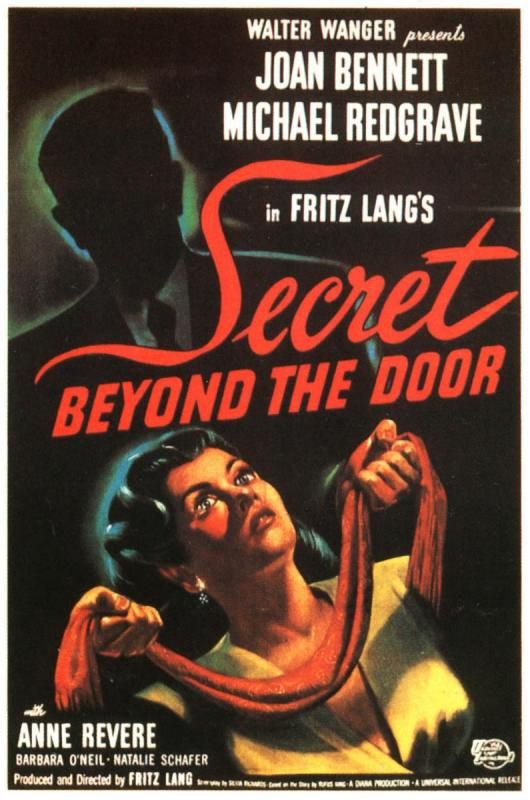
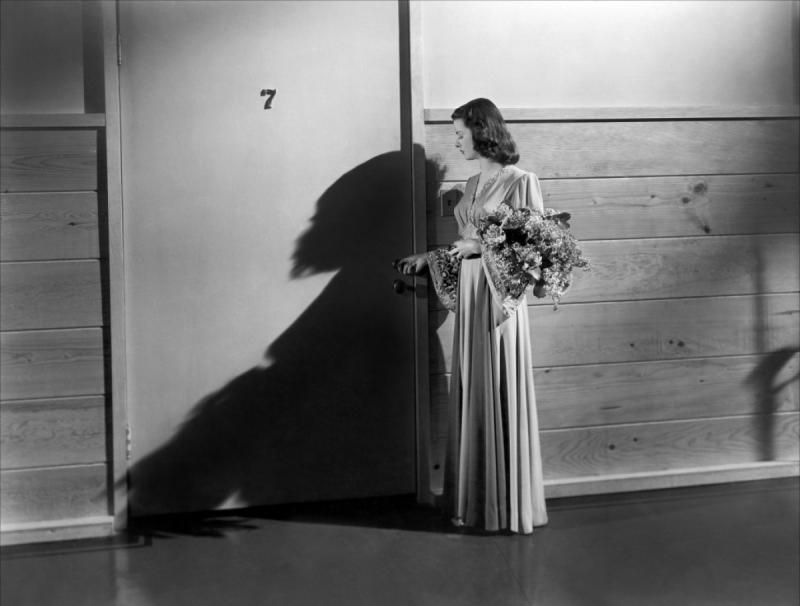
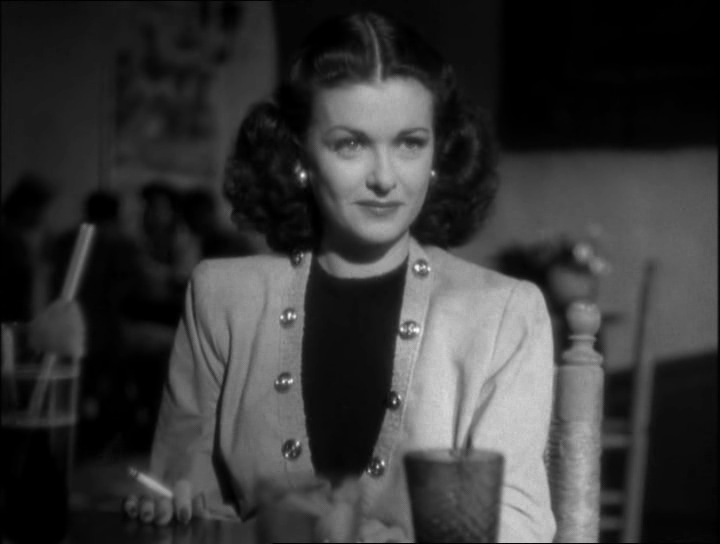
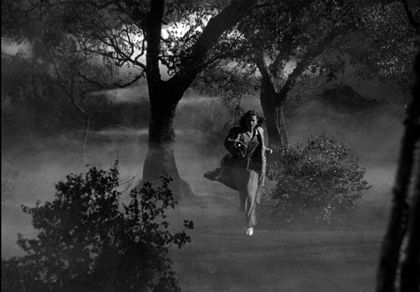
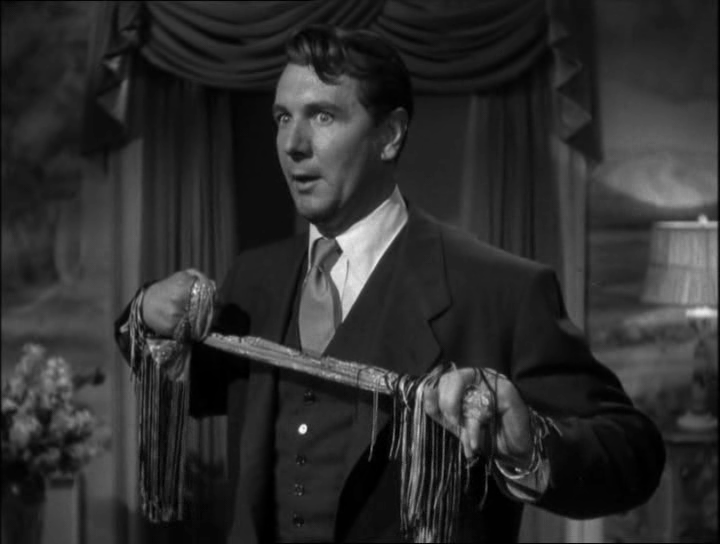
I haven't seen this one so didn't read your review. I can't for the life of me figure out why The List skips The Woman in the Window and, especially, Scarlet Street when parsing out Lang's American films. One of the many mysteries, I guess ...
ReplyDeleteThis WAS a harder film to locate, but it looks like it finally got a DVD release last year. When I first started going through The Book, I had difficulty getting my hands on a copy. Not so much anymore.
DeleteYeah, I don't tend to read reviews for films I haven't seen. For what it's worth, I try to avoid spoilers like the plague, and when I feel as if I have to talk about more plot details than normal, I attach a spoiler warning. But I also understand about wanting to make up your mind about a movie without outside influence.
My mother once asked me, laughingly, what I would do when I finished going through "1001 Movies." "You'll have nothing left to watch!" she said. Ha ha ha - this is only the tip of the iceberg. There are so many other films out there! TOO MANY!
I found this one insanely Freudian. I like Lang a lot, but would rather watch almost any of his other films over this one again.
ReplyDeleteHa ha! I imagine that its inclusion in this list has a large part to do with the novelty of the "murder rooms," because honestly, that was probably the best part of the movie for me. All the psychological nonsense was just that - nonsense. I figure it was a fad of the time.
DeleteI can finally go back to your review and, yeah, you are of course right. This is a mix of expertly applied style and suspense and on the other hand a rip-off of better movies. Add to that a psychobabble ending and you are left with a bland experience. Oh, and Redgrave is indeed laughable as an insane villain.
ReplyDelete